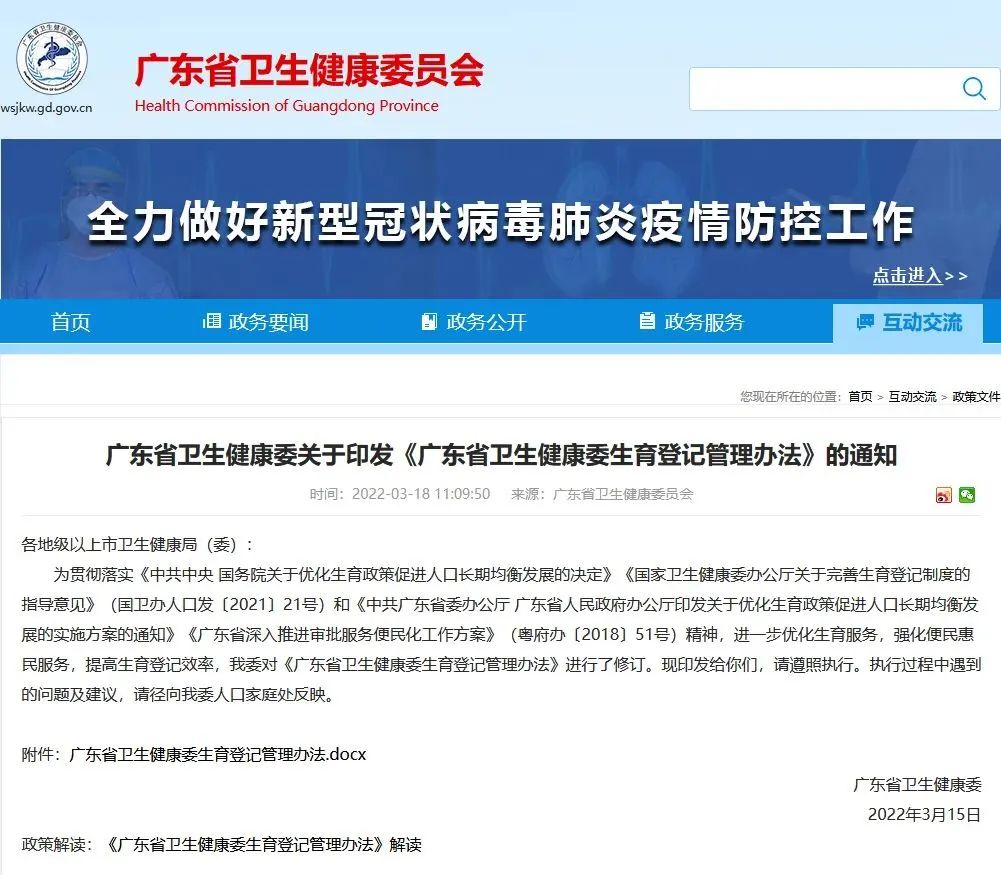9F, Zhongrui Jumei Building, 68 Jiuzhang Road, Suzhou Industrial Park, Jiangsu Province
Policies and regulations
"The 14th Five Year Plan" for the Medical and Health Service System of Guangdong Province was released
Recently, the Guangdong Provincial Health Commission and the Guangdong Provincial Development and Reform Commission jointly issued the "14th Five Year Plan" for the Medical and Health Service System in Guangdong Province (hereinafter referred to as the "Plan").

The Planning has 12 chapters and 50 sections. It is proposed that by 2025, a strong public health system that can effectively respond to major epidemics and public health emergencies and basically meet the needs of the public security situation should be basically completed. The high-quality and efficient integrated medical and health service system with Guangdong characteristics should be further improved and finalized, and the overall goal of balancing the allocation of high-quality medical and health resources, homogenizing basic medical and health services, and equalizing basic public health services should be achieved. 19 specific development indicators were identified from six aspects: health level, disease prevention and control, emergency medical treatment, bed and manpower allocation, traditional Chinese medicine services, and key population services. The main plan is to construct the following seven systems:
First, build a strong public health system. Accelerate the streamlining of institutional mechanisms, improve infrastructure, enhance professional capabilities, reform the disease prevention and control system, optimize the monitoring, early warning, and emergency response system, improve the treatment system for infectious disease outbreaks and public health emergencies, strengthen the integration of traditional Chinese and Western medicine, and enhance the modernization level of the provincial public health system.
The second is to build a high-quality medical service system. Implement the medical and health construction highland project, focus on the superior resources of high-level hospitals, promote the construction of national medical centers, national regional medical centers, and Guangdong International Medical Center, improve the medical service capacity of cities and counties, promote the coordinated development of social medical services, and promote the expansion of high-quality medical resources and balanced regional layout.
The third is to build a solid and effective grassroots medical and health service system. Establish and improve the grassroots operational mechanism and system, improve the development of rural medical and health systems, improve urban community medical and health networks, accelerate the construction of a close county medical community, optimize the functions of basic medical and public health services, and further enhance the capacity of grassroots medical and health services.
Fourth, create a distinctive TCM service system. Give full play to the characteristics and advantages of traditional Chinese medicine in Guangdong, promote the construction of a strong province with traditional Chinese medicine, establish a high-quality and efficient traditional Chinese medicine service system that integrates prevention and health care, disease treatment, and rehabilitation, and further play the unique role of traditional Chinese medicine in disease prevention and treatment.
Fifth, optimize the comprehensive and full cycle health service system. Centering on the entire life cycle and health process services, focusing on "one elderly and one young", we will accelerate the improvement of the maternal and child health, universal childcare, and elderly health service systems, highlight weak areas such as occupational health, mental health, and mental health, and health education, and accelerate the completion of the shortcomings of the comprehensive full-cycle health service system.
Sixth, promote the digital transformation of health. Promote the construction of a demonstration province of "Internet plus medical health", intensively build an information infrastructure support system, strengthen the digital public health service system, promote the integrated and innovative development of digital health, and provide diversified and convenient health services for the masses.
Seventh, create a deeply integrated international medical and health service system. Guided by the construction of a community of human health, we will actively give play to Guangdong's regional advantages as the Guangdong Hong Kong Macao Greater Bay Area and an important hub of the "the Belt and Road", continue to promote the construction of a healthy bay area, and strengthen international cooperation in the field of health.
It is reported that by the end of 2020, there are 56000 medical and health institutions in the province, including 735 public hospitals, 965 private hospitals, 1175 township (street) health centers, 2679 community health service centers (stations), 23328 outpatient departments (clinics), 25887 village clinics, 897 professional public health institutions, and 234 other medical and health institutions.
During the "13th Five Year Plan" period, the number of beds in medical and health institutions per 1000 permanent residents in the province increased from 3.73 to 4.48, the number of practicing (assistant) doctors per 1000 permanent residents increased from 1.96 to 2.44, the number of registered nurses per 1000 permanent residents increased from 2.18 to 2.97, and the number of general practitioners per 10000 population increased from 1.31 to 3.12. 86.8% of households in the province can reach the nearest medical point within 10 minutes, The average life expectancy in the province has increased from 77.1 years to 78.4 years, and the fairness and accessibility of basic medical and health services have significantly improved.
Source: Guangdong Provincial Health Commission, Sina.com

